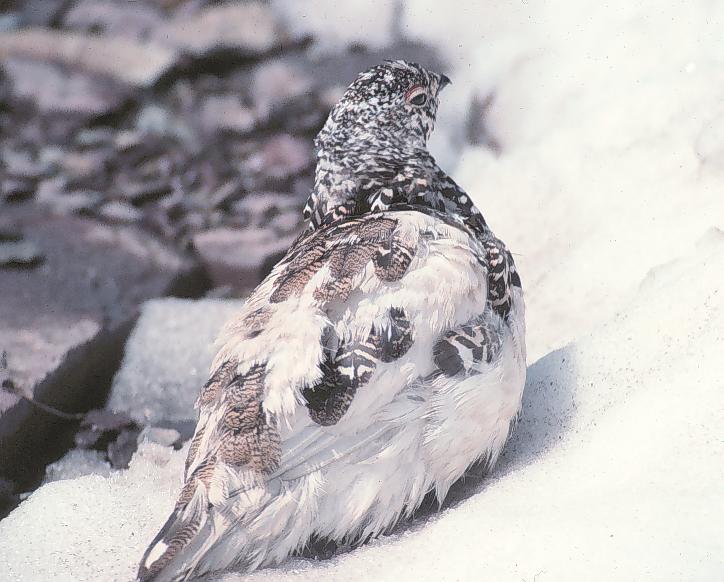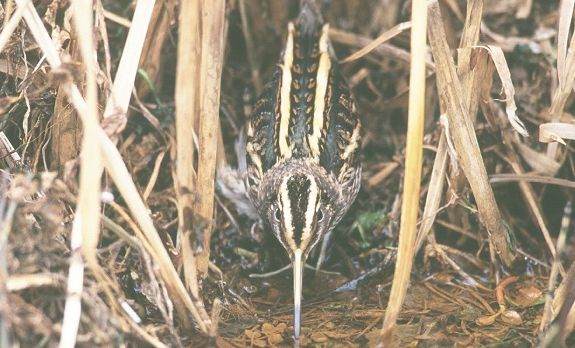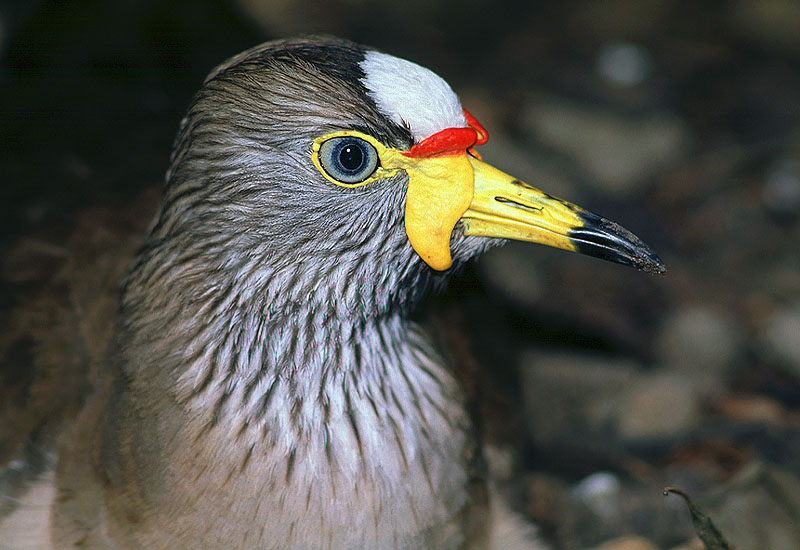

QUIZ 10
White-tailed Ptarmigan- Lagopus leucurus
The small "Snow Ptarmigan" lives above the tree line most of the year. It's plumage is completely white during winter, apart from its dark eyes and black bill and claws. Its two congeners, the Rock Ptarmigan (L. mutus) and the Willow Ptarmigan (L. lagopus), are also mainly white, but their tail feathers remain predominantly dark. During summer, both sexes have body mottled with black, brown and buff vermiculated feathers, retaining white on tail, wings, belly and legs. The bill is intermediate between those of the two other members of the family. Immatures show some black pigments on the outer two primaries. The orange eye-stripe is not really distinctive.
Photographed by Brad Bergstrom.


QUIZ 11
Jack Snipe- Lymnocryptes minimus
The smallest Snipe, with a relatively short bill and narrow wings, this bird differs from all other Snipes by several characteristics: a wedge-shaped tail which lacks white, a brown crown without central stripe and purple, a short bill and green gloss on black upperparts. Sexes are alike and juveniles are quite similar to adults, but have white undertail coverts with paler and smaller brown stripes. Chiefly solitary, nocturnal or crepuscular, the Jack Snipe breeds in open marshes, floodplains and bogs. In winter, it can be found in various brackish and freshwater habitats, sometimes in groups of up to 20 birds.
Photographed by Rob Versteeg.


QUIZ 12
Senegal Wattled Plover- Vanellus senegallus
A large and very distinctive Plover. Both the male and female have long yellow facial wattles as well as smaller red ones on the forehead. As with all the lapwings of the genus Vanellus, the Wattled Plover has a white wing stripe (visible in flight) and a white base to its tail. This young bird (chin and throat whitish, black in adult) of the eastern or southern african race (Vanellus senegallus lateralis) shows a yellow bill with a solid black tip, brown streaks on head and neck, a white forehead, and a typical pattern of the eye. It's a locally common resident species, confined to the north-eastern parts of southern Africa. Its typical habitat includes swamps, streams and lakes. These birds occur solitary or in pairs, occasionally in small groups. Their diet consists mainly of insects, but also some seeds. They walk slowly when foraging and squats low on the ground when danger is suspected, finally taking to flight with loud calls. The nest is a shallow unobtrusive scrape in the ground, lined with bits of dry plants or small stones.
Photographed by Nico Smit.

Gallery overview
Quiz Statistics
Quiz results
Rules
Hall of Fame
More links !








